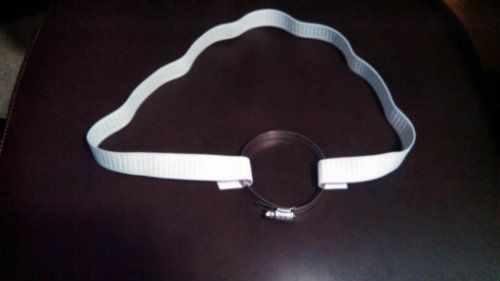FattyMcChubChub
New Member

Easiest harness ever. Wear under shirt. Push arc reactor though front of shirt. Done.
Material:
1. Elastic band
2. 3-4" adjustable hose clamp
Just sew the ends of the band around the clamp and you're good to go. You don't necessarily even need the elastic band, it'll just prevent the reactor from lifting off your chest with your shirt. Depending on how you rig your batteries I suggest using a shirt you don't care about snipping a tiny hole in so you can run the wire through to your batteries.

